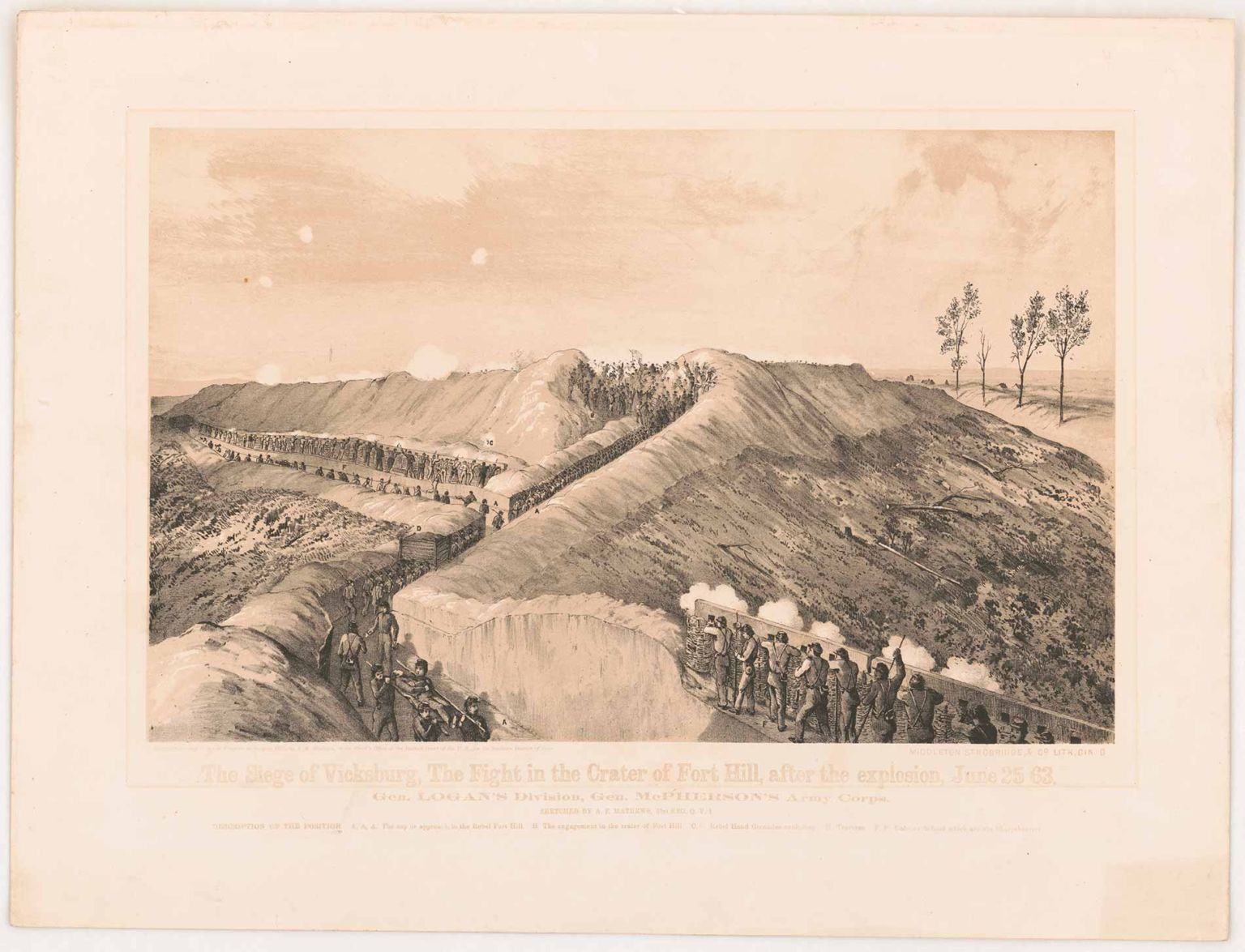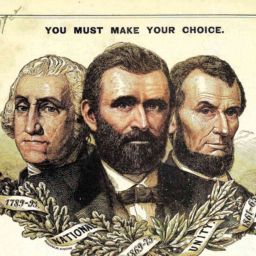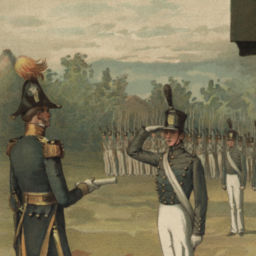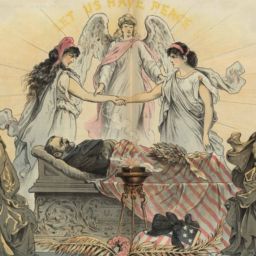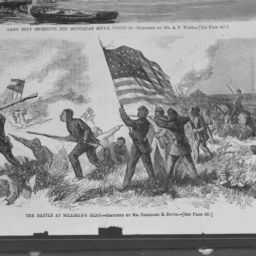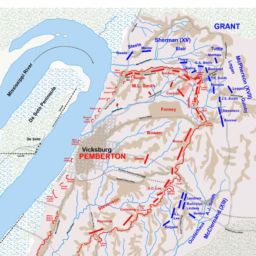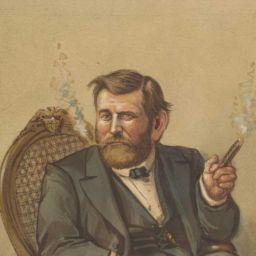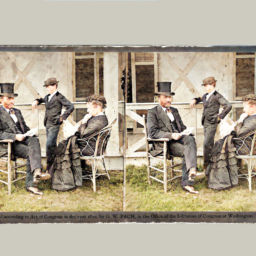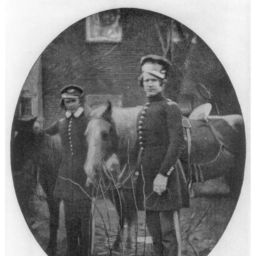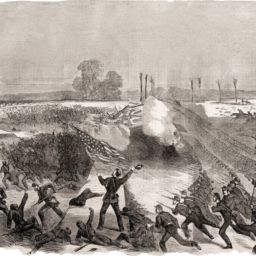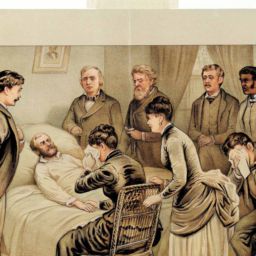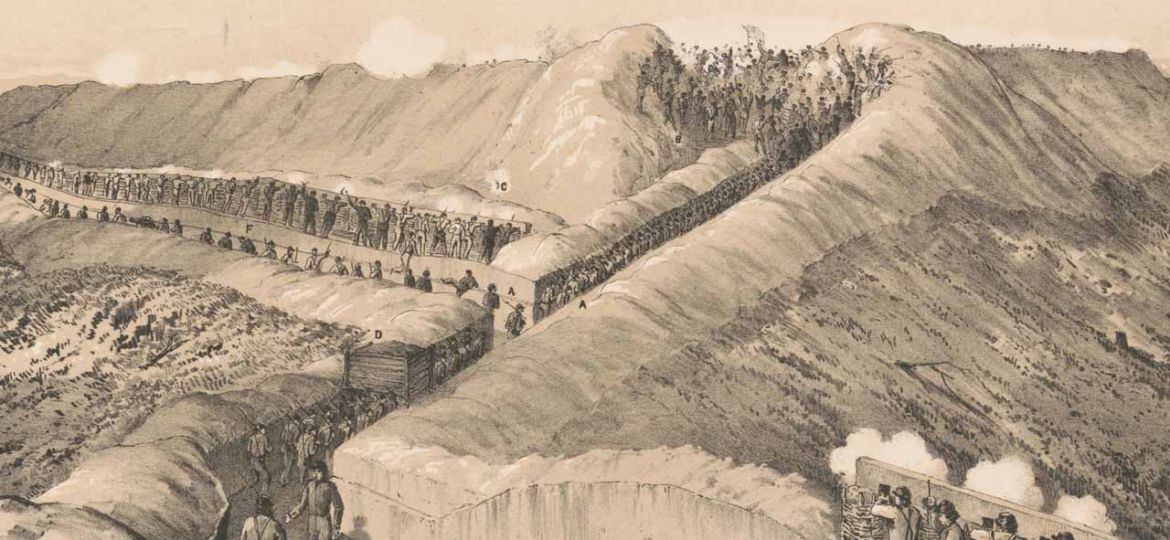
American Civil War, Western Theater, Vicksburg campaign. On June 25, 1863, commander of the U.S. Army of the Tennessee, Major General Ulysses S. Grant, literally tried to blow a hole in the defensive works of Vicksburg, Mississippi, which he had been besieging since May 23.
From Grant’s Personal Memoirs:
From the 23d of May the work of fortifying and pushing forward our position nearer to the enemy [inside Vicksburg] had been steadily progressing. At three points on the Jackson road . . . a sap was run up to the enemy’s parapet, and by the 25th of June we had it undermined and the mine charged. . . . [The Confederates’] parapet was also our protection. The soldiers of the two sides occasionally conversed pleasantly across this barrier; sometimes they exchanged the hard bread of the Union soldiers for the tobacco of the Confederates; at other times the enemy threw over hand-grenades, and often our men, catching them in their hands, returned them.
Our mine had been started some distance back down the hill; consequently when it had extended as far as the parapet it was many feet below it. This caused the failure of the enemy in his search to find and destroy it. On the 25th of June at three o’clock, all being ready, the mine was exploded. A heavy artillery fire all along the line had been ordered to open with the explosion. The effect was to blow the top of the hill off and make a crater where it stood. The breach was not sufficient to enable us to pass a column of attack through. In fact, the enemy, having failed to reach our mine, had thrown up a line farther back, where most of the men guarding that point were placed. There were a few men, however, left at the advance line. . . . All that were there were thrown into the air, some of them coming down on our side, still alive. . . .
As soon as the explosion took place the crater was seized by two regiments of our troops who were near by, under cover, where they had been placed for the express purpose. The enemy made a desperate effort to expel them, but failed, and soon retired behind the new line. From here, however, they threw hand-grenades, which did some execution. The compliment was returned by our men, but not with so much effect. The enemy could lay their grenades on the parapet, which alone divided the contestants, and roll them down upon us; while from our side they had to be thrown over the parapet, which was at considerable elevation. During the night we made efforts to secure our position in the crater against the missiles of the enemy, so as to run trenches along the outer base of their parapet, right and left; but the enemy continued throwing their grenades, and brought boxes of field ammunition (shells), the fuses of which they would light with portfires, and throw them by hand into our ranks. We found it impossible to continue this work. (550–553)
Sappers with Mining Experience
The effort of the Vicksburg mine had started shortly before June 23, when General Grant called for men among his soldiers with coal-mining experience to report to Captain Andrew Hickenlooper, chief engineer of XVII Corps.
Some 35 men reported as ordered on June 23, and in two days a gallery 45 feet long was excavated with three small 15-foot-long tunnels radiating from it. Those tunnels on June 25 were packed with 2,200 pounds of gunpowder. But the assault following the explosion failed. The National troops withdrew back to their trenches at 5 p.m. They had lost almost 200 men to death or wounds, 68 from the 45th Regiment Illinois Volunteer Infantry (Korn 148–149).
45th Regiment Illinois Volunteer Infantry
Known as the “Washburn Lead Mine Regiment”, the 45th Illinois’s nickname derived from U.S. congressman Elihu B. Washburne and the lead mining industry of his northwestern Illinois district that he represented (Wikipedia). The regiment earned two honors afforded them on the day that Grant’s troops entered Vicksburg less than two weeks later. Wilbur Fisk Crummer wrote in With Grant at Fort Donelson, Shiloh and Vicksburg, and an appreciation of General U. S. Grant:
Gen. Badeau, in his history of Gen. Grant says: “Logan’s division Was one of those which had approached nearest the works, and now was the first to enter the town. It had been heavily engaged in both assaults and was fairly entitled to this honor. The 45th Illinois Infantry marched at the head of the line and placed its battle-torn flag on the court house in Vicksburg. Gen. Grant and Gen. Logan rode into the town at the head of Logan’s division. (158–159)
In the June 25 mine attack, the soldiers of Pemberton’s defending Confederate garrison within Vicksburg suffered fewer than 100 casualties (men killed, wounded, captured, or reported missing), with only six killed by the explosion itself (Korn 149).
IMAGE
Full image with description below; cropped version above.
SOURCES
Crummer, Wilbur Fisk. With Grant at Fort Donelson, Shiloh and Vicksburg, and an appreciation of General U. S. Grant. Oak Park, Ill.: E.C. Crummer, 1915. Internet Archive.
Grant, Ulysses S. Personal Memoirs of U.S. Grant. 2 Vols. New York: Charles L. Webster & Company, 1885. Hathi Trust.
Korn, Jerry. War on the Mississippi: Grant’s Vicksburg Campaign. Alexandria, Virginia: Time-Life Books Inc., 1985.
Wikipedia, s.v. “45th Illinois Infantry Regiment,” last modified May 28, 2021, at 03:26, https://en.wikipedia.org/wiki/45th_Illinois_Infantry_Regiment.


